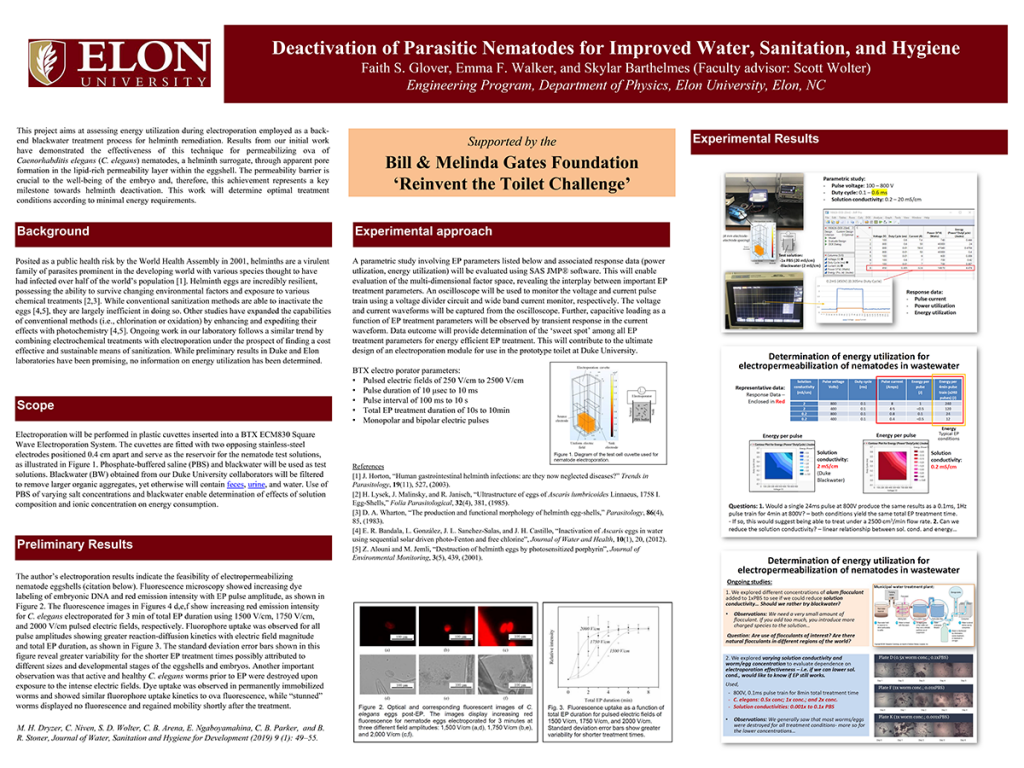Emma Walker
Class of 2022
- Biomedical Engineering

Deactivation of Parasitic Nematodes for Improved Water, Sanitation, and Hygiene
Project Mentor:
- Scott Wolter, associate professor of engineering
Project Abstract
Helminth infections, caused by parasitic worms, impact approximately a quarter of the global population according to the World Health Organization (WHO). This global health issue predominantly affects individuals in developing regions of the world, as they are more likely to have insufficient water, sanitation, and hygiene resources. Recent work in our laboratory has reported on deactivation of parasitic worms using high intensity pulsed electric fields to permeabilize cellular and eggshell lipid bilayers. Initial work showed eggshell permeability in Caenorhabditis elegans (C. elegans) nematodes that was determined to be detrimental to the developing embryo. More recent work by our collaborators at Duke University has shown similar efficacy for destruction of Ascaris suum, a helminth parasite of swine. Herein, we report on research to evaluate the impact of varying solution conductivities and C. elegans worm and egg concentrations on the pulsed electric field deactivation efficiency. C. elegans were placed onto nematode growth media plates, which provided nutritive support allowing the worms to thrive and produce eggs. After approximately two days, 0.1X (solution conductivity ~ 2 mS/cm), 0.01X (~ 0.2 mS/cm), and 0.001X (~ 0.02 mS/cm) phosphate buffered saline solutions were pipetted onto separate plates containing worms and newly hatched eggs, then transferred from the plates into cuvettes fitted with opposing electrodes for electric field deactivation. Additionally, varying concentrations of worms and eggs (0.5, 1.0, and 2.0 times standard worm and egg concentrations) were placed into cuvettes of differing solution conductivities to enable a comprehensive parametric study. Results thus far show a strong relationship between pulsed electric field deactivation efficiency to that of solution conductivity and worm and egg concentration in the buffer solution. We will discuss observations during our experimental work and ongoing effort through our work with the Bill & Melinda Gates Foundation ‘Reinvent the Toilet Challenge.’
 Download Project Presentation
Download Project Presentation